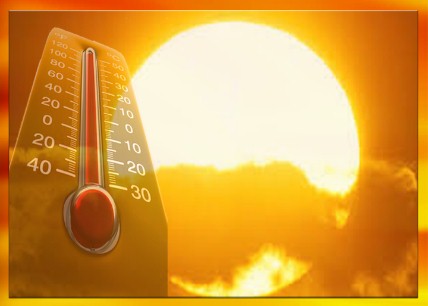The Dangers of Heat Exposure
The Dangers of Heat Exposure
July 29, 2016
 Heat is one of the top weather-related killers in the United States, resulting in hundreds of fatalities each year. In fact, in an average year, studies show that approximately 175 Americans die from extreme heat. [1] Additionally, many more people also suffer from a variety of non-fatal heat-related illnesses, especially during summer months. There is no doubt that excessive heat is an incredibly dangerous nuisance. There are many types of heat-related illnesses. These include heat exhaustion, heat cramps, heat rash, and the most deadly, heat stroke.
Heat is one of the top weather-related killers in the United States, resulting in hundreds of fatalities each year. In fact, in an average year, studies show that approximately 175 Americans die from extreme heat. [1] Additionally, many more people also suffer from a variety of non-fatal heat-related illnesses, especially during summer months. There is no doubt that excessive heat is an incredibly dangerous nuisance. There are many types of heat-related illnesses. These include heat exhaustion, heat cramps, heat rash, and the most deadly, heat stroke.
Young children, the elderly, and those who are sick or overweight are more likely to become victims. However, anyone who is exposed to hot and humid conditions is at risk.
Knowing the symptoms of heat-related illnesses is extremely important and can help you quickly act to save yourself, as well as others who are at risk. Muscle cramping can be the first sign of heat-related illnesses, and may lead to heat exhaustion or stroke. You can also recognize heat exhaustion and heat stroke if you are suffering from other symptoms such as heavy sweating, headaches, nausea, feeling faint, dizzy, weak, or tired, and the feeling of your heart beating faster than normal.
Excessive heat exposure often happens on the job, particularly when you’re outdoors. Every year, thousands of workers suffer from some type of heat-related illness. Because of this, it’s important for you to keep yourself safe from the dangers of heat exposure. Some ways in which you can do this are by consistently drinking water, resting when breaks are available, and spending time in the shade when possible. With just these small changes, you can not only remain safe and healthy, but you can become a more productive worker as well.
In general, heat-related illnesses and deaths are preventable. Specifically, there are a number of things that you can do to prevent yourself and your co-workers from falling victim to heat-related illnesses. These include:
- Drinking water every 15 minutes, even if you are not thirsty.
- Finding an area of shade to rest and keep cool when possible.
- Wearing a hat and light-colored clothing.
- Keeping an eye on your fellow co-workers and watching for heat-related symptoms.
- Doing your best to pace yourself when working in heat for the first time in a while. Remember, your body needs to adjust to the change of temperature.
Overall, you can prevent yourself from becoming a victim of excessive heat! Don’t forget to visit http://emergency.cdc.gov/disasters/extremeheat/heat_guide.asp to learn more about the precautions you can take to avoid having this happen to you.
[1] Source: fema.gov. Statistics from the Federal Emergency Management Agency.








